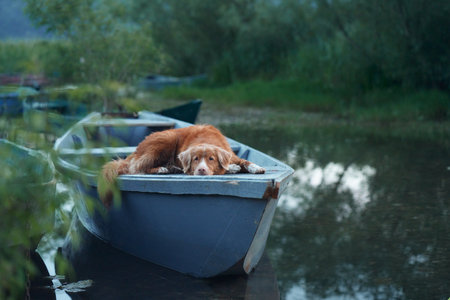Introduction to Amphibians as Exotic Pets in the UK
Keeping amphibians as exotic pets has become increasingly popular across the UK, offering a fascinating alternative to more traditional pets. Amphibians—such as frogs, newts, salamanders, and toads—are celebrated for their unique behaviours, striking colours, and relatively low space requirements. Their distinct life cycles and environmental needs present both challenges and rewards for British pet keepers keen on something different. Before diving into amphibian care, it’s helpful to understand which species are most commonly kept and what makes them so appealing.
An Overview of Popular Pet Amphibian Species in Britain
| Species | Common Name | Unique Features | Typical Lifespan |
|---|---|---|---|
| Lissotriton vulgaris | Smooth Newt | Native species, easy care, small size | 6-10 years |
| Cynops orientalis | Chinese Fire-Bellied Newt | Vivid belly colours, active swimmer | 10-15 years |
| Xenopus laevis | African Clawed Frog | Aquatic, robust, interactive feeder | 10-15 years |
| Dendrobates tinctorius | Dyeing Dart Frog | Brightly coloured, arboreal habitats needed | 5-10 years |
| Bombina orientalis | Oriental Fire-Bellied Toad | Semi-aquatic, hardy, attractive markings | 10-15 years |
The Unique Appeal of Amphibians as Exotic Companions in the UK
The charm of keeping amphibians lies in their captivating appearance and intriguing behaviours. Unlike dogs or cats, amphibians often require less hands-on interaction but reward observant keepers with displays of natural behaviour seldom seen elsewhere. For many Britons living in urban environments with limited space or strict landlord rules, amphibians offer an exotic yet practical pet choice. Their varied diets, specialised habitats, and nocturnal activity patterns create a learning experience for owners keen on expanding their knowledge of animal husbandry and conservation.
Understanding UK Legal and Ethical Considerations
Before bringing amphibians into your home as exotic pets, it’s vital to familiarise yourself with the legal landscape and ethical responsibilities unique to the United Kingdom. UK legislation is designed to protect both native and exotic species, as well as public health and local ecosystems. Below, you’ll find essential information on current laws, licensing requirements, and best practices for ethically sourcing and caring for amphibians.
UK Laws Regarding Amphibian Ownership
Several key pieces of legislation govern the keeping of amphibians in the UK. The most relevant include:
| Legislation | Purpose | Key Points |
|---|---|---|
| The Wildlife and Countryside Act 1981 | Protects native wildlife species | Some native amphibians are protected; capture or sale without a licence is prohibited. |
| The Animal Welfare Act 2006 | Ensures animal welfare standards are met | All pet owners have a duty of care to provide suitable habitat, diet, and veterinary care. |
| CITES (Convention on International Trade in Endangered Species) | Regulates international trade of endangered species | Certain amphibian species require permits to import, export, or sell. |
Licensing Requirements
If you plan to keep certain non-native or endangered species, you may need specific licences from DEFRA (Department for Environment, Food & Rural Affairs) or your local authority. Always check if your chosen amphibian requires an Article 10 certificate or other permissions under CITES regulations. Failing to comply can result in fines or confiscation of animals.
When Is a Licence Needed?
| Species Type | Licence Required? |
|---|---|
| Native protected species (e.g., Great Crested Newt) | Yes – for keeping, breeding, or selling |
| CITES-listed non-native species (e.g., Axolotl) | Yes – for import/export; sometimes for sale or display |
| Common non-protected amphibians (e.g., Fire-bellied Newt) | No – unless kept in large numbers or for commercial purposes |
Ethical Guidelines for Sourcing Amphibians
Sourcing amphibians responsibly is just as important as meeting legal requirements. Here are some practical tips:
- Avoid Wild Capture: Choose captive-bred individuals from reputable breeders to reduce pressure on wild populations.
- Check Seller Credentials: Ensure sellers are licensed if required, and ask about the origin of their animals.
- Avoid Impulse Purchases: Research thoroughly before buying, making sure you can meet long-term care needs.
Your Duty of Care Under UK Law
- You must provide adequate space, clean water, appropriate food, temperature control, and veterinary care at all times.
- Mistreatment or neglect can result in prosecution under the Animal Welfare Act 2006.
By understanding and adhering to UK laws and ethical guidelines, you not only protect yourself legally but also contribute positively to conservation efforts and animal welfare. Always stay informed about regulatory updates before acquiring new pets.

3. Setting Up the Ideal British Habitat
Creating a suitable environment for your amphibian is crucial, especially given the UK’s variable weather and indoor conditions. Amphibians are highly sensitive to changes in temperature, humidity, and the quality of their surroundings. Here’s how you can set up a habitat that ensures your exotic pet thrives in a typical British home.
Understanding the UK Climate Challenges
The UK climate is generally cool and damp, but central heating during winter can make indoor air dry and warm, which isn’t always ideal for amphibians. You’ll need to create microclimates within your vivarium or terrarium to mimic their natural habitats as closely as possible.
Heating and Temperature Control
Most amphibians require stable temperatures. Use heat mats or ceramic heaters rather than heat lamps, as they provide gentle warmth without drying the air. A thermostat is essential to prevent overheating or chilling. Here’s a quick reference table:
| Species Type | Day Temp (°C) | Night Temp (°C) |
|---|---|---|
| Tropical Frogs | 22–26 | 18–22 |
| Newts & Salamanders | 16–20 | 12–16 |
| Toads (UK natives) | 15–20 | 10–14 |
Tip:
Always place thermometers at different levels in the tank to monitor temperature gradients.
Humidity Management
The right humidity level keeps amphibians healthy. In the UK, central heating often causes low humidity indoors, so misting systems or regular hand-misting may be necessary. Consider adding live plants, water bowls, or shallow ponds for species that require higher moisture. Humidity should generally range from 60% for temperate species up to 80% for tropical ones.
Selecting Substrates and Furnishings
Amp up comfort and hygiene with appropriate substrates such as coco fibre, sphagnum moss, or soil mixes designed for amphibians. Avoid substrates like gravel that can cause impaction if swallowed. Include leaf litter for burrowing species and ensure all materials are chemical-free.
Recommended Substrates Table:
| Species Group | Best Substrate Options |
|---|---|
| Tropical Frogs & Tree Frogs | Coco fibre, sphagnum moss, orchid bark |
| Semi-aquatic Newts & Salamanders | Smooth river stones, aquatic soil, peat moss mix |
| Natives (Toads/Frogs) | Pesticide-free soil, leaf litter, damp moss |
The Importance of Hiding Places and Enrichment
Add hiding spots using cork bark, rocks, or commercially available hides to help reduce stress. Provide climbing branches or aquatic plants depending on your amphibian’s preferences—this not only supports natural behaviours but also encourages exercise and mental stimulation.
Key Points to Remember:
- Mimic natural light cycles with timers for day/night rhythm.
- Avoid direct sunlight on tanks to prevent overheating.
- Cycling water in aquatic setups prevents stagnation—use filters where appropriate.
- Regularly check all equipment and clean enclosures with pet-safe products only.
A properly set-up habitat will keep your amphibian healthy, happy, and active—making them a fascinating part of your British household.
4. Feeding and Nutrition for UK Amphibian Keepers
Ensuring your amphibians receive a balanced and nutritious diet is crucial for their health and longevity. In the UK, keepers have access to a variety of suitable food sources, but it’s important to understand what best meets the needs of different species. Below are practical guidelines on feeding, supplementing, and choosing appropriate foods readily available in the UK.
Best Practices for Feeding Amphibians
Most amphibians are insectivorous, though some species may require a more varied diet. Always research the dietary needs specific to your amphibian species. Feed live food where possible, as it stimulates natural hunting behaviour and provides enrichment. Offer food in the evening or at night, as many amphibians are nocturnal feeders.
Commonly Available Foods in the UK
| Food Type | Suitable Species | Availability in the UK | Notes |
|---|---|---|---|
| Crickets | Frogs, newts, salamanders | Pet shops, online retailers | Dust with supplements before feeding |
| Mealworms & Waxworms | Larger frogs, axolotls, salamanders | Pet shops, fishing bait suppliers | Use sparingly; high fat content |
| Daphnia & Bloodworm (live or frozen) | Aquatic newts, axolotls, tadpoles | Aquatic stores, online retailers | Ideal for aquatic species; rinse before use |
| Earthworms | Larger species (e.g., bullfrogs) | Bait shops, garden centres (ensure chemical-free) | Nutritious staple for many amphibians |
| Fruit Flies | Dart frogs, small newts & salamanders | Specialist suppliers online | Essential for tiny or juvenile species |
Supplementation: Calcium and Vitamins
The UK climate means UVB exposure can be limited indoors, so supplementation is essential. Dust live food with a calcium supplement two to three times per week and use a multivitamin supplement once weekly. This helps prevent metabolic bone disease and supports overall vitality.
Supplement Schedule Example:
| Day of Week | Supplement Action |
|---|---|
| Monday/Thursday/Saturday | Calcium powder on live food |
| Wednesday | Multivitamin powder on live food |
Treats and Variety in Diet
Add variety by occasionally offering treats such as silkworms or small slugs (ensure they are from pesticide-free environments). Monitor your amphibian’s weight and adjust portions to avoid obesity or malnutrition. Remove uneaten food promptly to maintain hygiene within the enclosure.
Cultural Considerations and Ethical Sourcing in the UK Context
Always purchase live foods from reputable UK-based suppliers who follow ethical breeding practices. Avoid collecting wild insects due to potential pesticide contamination common in British gardens and parks. By following these guidelines, you will support not only your pet’s health but also responsible exotic pet ownership standards within the UK.
5. Health, Handling, and Enrichment
Routine Care for Amphibians
Amphibians require consistent and attentive care to thrive in a UK home. Establishing a daily, weekly, and monthly maintenance routine is crucial for their wellbeing. Below is a helpful guide:
| Frequency | Task |
|---|---|
| Daily | Check temperature and humidity, observe behaviour, remove uneaten food |
| Weekly | Clean water dishes, spot-clean habitat, inspect for health issues |
| Monthly | Deep clean enclosure, replace substrate as needed, review diet variety |
Recognising Common Health Issues
Early detection of health problems can make all the difference. Watch for these typical signs:
- Lethargy: Less movement or hiding more than usual may signal stress or illness.
- Poor Appetite: Refusal to eat often points to underlying issues.
- Skin Abnormalities: Discolouration, sores, or excessive shedding are red flags.
- Unusual Swimming or Walking: Erratic movements could indicate neurological concerns.
- Bloating or Weight Loss: These changes merit prompt veterinary attention.
If you spot any of these symptoms, seek advice from an exotic animal vet familiar with amphibians in the UK.
Safe Handling Methods
Handling amphibians should be minimal to reduce stress and prevent injury. Always wash your hands thoroughly before and after contact, as amphibians absorb chemicals through their skin. Follow these steps for safe handling:
- Dampen your hands with dechlorinated water to avoid harming sensitive skin.
- Gently cup the amphibian without squeezing; support its body fully.
- Avoid handling during shedding or after feeding when they are more vulnerable.
- If possible, use soft nets or containers rather than direct hand contact for larger species.
Important Note on UK Species Protection
Certain native British amphibians are protected by law. Always check legal requirements before acquiring or handling wild specimens.
Creative Enrichment Ideas for Amphibians
Enrichment prevents boredom and encourages natural behaviours. Here are some UK-appropriate enrichment activities:
- Habitat Rearrangement: Regularly change the layout with rocks, logs, and plants to stimulate exploration.
- Feeding Variety: Offer different insect species and present food in ways that encourage hunting instincts (e.g., live feeders in safe containers).
- Environmental Cues: Simulate rainfall using misting systems and adjust lighting cycles seasonally to mimic natural British conditions.
- Shelters & Hides: Provide multiple hiding spots using locally-sourced stones or cork bark to reduce stress and promote natural hiding behaviour.
- Pools & Water Features: For aquatic species, incorporate moving water elements like small waterfalls or gentle bubblers for stimulation.
Caring for amphibians as pets in the UK involves mindful observation and creative engagement. By following these guidelines, you’ll help ensure your exotic companions remain healthy and enriched throughout their lives.
6. Connecting with the British Amphibian Community
Becoming part of the UK’s amphibian-keeping community not only enriches your experience as a keeper but also ensures you’re up to date with the latest care standards, conservation news, and legal changes. Here’s how you can engage with fellow enthusiasts and support ethical practices.
Finding Reputable Suppliers
Choosing where to source your amphibians is crucial. Always opt for reputable UK-based suppliers who prioritise animal welfare, legality, and captive-bred stock. Avoid wild-caught specimens whenever possible, as their collection can threaten native populations and often results in stressed or unhealthy animals. Use this checklist when evaluating suppliers:
| Criteria | Why It Matters |
|---|---|
| Defra Registration/Compliance | Ensures supplier meets UK legal requirements |
| Captive-bred Only | Promotes ethical sourcing and healthier pets |
| Transparent Record-Keeping | Allows traceability of animals’ origins |
| Positive Reviews from UK Keepers | Indicates reliability and quality service |
Joining UK Enthusiast Groups & Societies
Britain boasts a vibrant network of amphibian enthusiasts and herpetological societies. Joining these groups offers access to expert advice, local meetups, workshops, and exclusive resources tailored to the UK context. Consider these options:
- The British Herpetological Society (BHS)
- The Amphibian and Reptile Group UK (ARG UK)
- Local Facebook groups or online forums such as Reptile Forums UK
Active participation in such communities helps you stay informed about best practices, legislation updates, and opportunities for collaboration.
Supporting Local Conservation Efforts
The UK is home to several threatened amphibian species, including the great crested newt. Responsible keepers often contribute to conservation by supporting habitat restoration projects or participating in citizen science initiatives. Here are some practical ways to get involved:
- Volunteer with organisations like Froglife or local Wildlife Trusts
- Report sightings of native or invasive species through official channels
- Donate to conservation campaigns focused on British amphibians
Your Ongoing Commitment
By sourcing ethically, connecting with fellow enthusiasts, and actively supporting conservation, you ensure that keeping amphibians as exotic pets in the UK remains both rewarding and sustainable. The community is your greatest resource—reach out, share knowledge, and make a positive impact locally.


